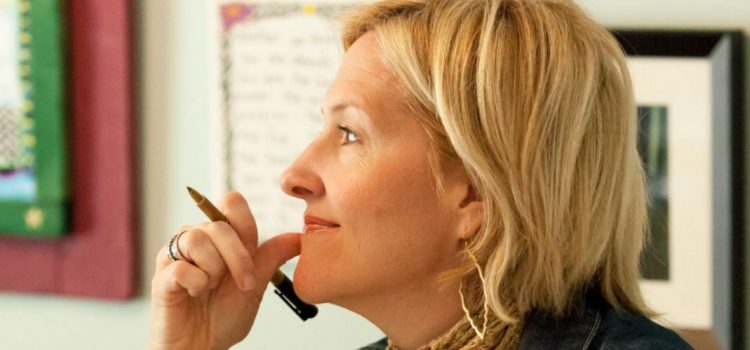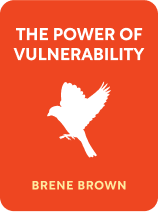

This article is an excerpt from the Shortform book guide to "The Power Of Vulnerability" by Brené Brown. Shortform has the world's best summaries and analyses of books you should be reading.
Like this article? Sign up for a free trial here .
What advice does Brené Brown give about living wholeheartedly? How can living wholeheartedly help you live your best life?
In Brené Brown’s lecture, The Power of Vulnerability, she discusses the importance of living wholeheartedly. Brown shares 10 practices that you can use in your life to start living wholeheartedly today.
Continue reading for Brené Brown’s advice on wholehearted living.
10 Practices for Living Wholeheartedly
Wholehearted living requires active engagement and constant reflection. There are 10 practices that you can use to begin living wholeheartedly.
Practice #1: Live Authentically by Letting Go of Other People’s Expectations
Authenticity is the process of accepting ourselves for who we really are and abandoning the idea of who we think we’re supposed to be. By placing value on your own needs and identity, authenticity helps develop your sense of self-worth.
To begin living authentically, consider the following tips:
- Be willing to say “no.” If someone asks you to do something that you don’t want to do or don’t feel you can do without overwhelming yourself, say “no.” You may frustrate some people when you begin to do this, but agreeing to do something you don’t want to do builds the foundation for resentment.
- Be willing to say “yes.” Conversely, if you find a project or venture that you’re genuinely excited about, say “yes.” Often, the prospect of imperfection or ineptitude may keep you from diving in. However, if you allow fear to dictate your behavior, you’ll never be willing to try new things or engage with projects that excite you.
- Develop a mantra. Create a simple mantra based on an authenticity goal. Repeat this phrase to yourself before entering high-stress situations to remind you to practice authenticity. For example, if your goal is to accept that your needs are important enough to say “no” to things, you could say to yourself, “My needs outweigh others’ expectations.”
Practice #2: Use Self-Compassion to Combat Perfectionism
Perfectionism, or the overwhelming need to be “perfect” in everything, is a key cause of shame. Self-compassion is the antidote to perfectionism because it allows you to learn from your mistakes without connecting them to your self-worth. There are three aspects of self-compassion:
- Self-kindness, or the willingness to be kind to yourself when you make a mistake. For example, if you burn a plate of cookies that you were meaning to use for the PTA meeting, forgive yourself for the error instead of falling into shame.
- Critical awareness, or the understanding that you are not the only person experiencing your struggle. For example, if you struggle with addiction, embrace the knowledge that others struggle with the same thing. This will prevent you from associating your addiction with your self-worth.
- Mindfulness, or the practices that help you work through what you’re feeling and provide comfort. These practices could include meditation, self-care, or activities. For example, if you’ve had a hard day at work, a warm bath can help you calm down and give you a relaxed environment to feel your emotions without spiraling into shame.
Practice #3: Generate Resilience Through Spirituality and Congruent Living
Resilience is your ability to recover from stress or trauma. A high level of resilience means that you can recover quickly from trauma and move forward, while a low level of resilience means that you recover slowly or shut down in moments of extreme stress.
To develop high levels of resilience, practice the following:
1. Congruent living: Take the time to relax and replenish your energy by practicing congruent living, or living life based on how you’re naturally built. Know what your body needs to recover, and find the time to engage with those practices. For example, if you know you need to take 45 minutes of alone time before bed to wind down, schedule that time into your day.
2. Spirituality: Spirituality is the belief that all people are connected by something greater than themselves. This allows people to lift some of the burdens of life from their own shoulders, and give them to a higher power. This also creates purpose and perspective, generating empathy and drive in the process. (Note: Spirituality isn’t inherently linked to organized religion. Though some people may find their spirituality through religions such as Islam, Christianity, or Judaism, spirituality can also be a personal perspective.)
3. Healthy venting: Venting is important. It lets you feel your emotions and allows you to express the severity of your current situation. When venting, you don’t have to lie about your feelings, even if they’re unpopular or uncomfortable. However, be sure to maintain some perspective when venting. Don’t compare your feelings or situation to others’ because you don’t know what other people are going through.
Practice #4: Avoid Foreboding Joy by Practicing Gratitude
Foreboding joy is the feeling of apprehension that develops when things are going well. For example, if you have kids, and you go out with your significant other for the night, foreboding joy would be spending the entire date night worrying about your children with the babysitter instead of enjoying your time with your partner.
However, foreboding joy doesn’t accomplish anything. No amount of preparation can lessen the impact of tragedy or disappointment, meaning that apprehension squanders positive emotions without providing any benefit. Don’t sacrifice your joy in the moment to fear for an unknown eventuality you have no control over.
With this in mind, how do the most joyful people avoid succumbing to fear? They practice gratitude. Gratitude doesn’t happen on its own. It requires attention and engagement. A few methods to practice gratitude include keeping a gratitude journal, talking about your gratitude with others, and finding joy in the “mundane.”
Practice #5: Listen to Your Intuition by Embracing Uncertainty
Intuition is personal insight commonly described as a “gut instinct.” This feeling develops through experience and helps shape your perspective on the world. Intuition is directly tied to authenticity as it represents your subconscious response to the world around you.
To start listening to your intuition, you must first accept that certainty isn’t real. The world is constantly changing, and no one can predict the future. Learning to sit with the uncertainty and allowing your instincts to guide your decision-making process often leads to clarity and fulfillment.
Faith is an important aspect of embracing uncertainty. It gives you the courage to walk into the unknown while believing in something greater than yourself. Similar to spirituality, faith doesn’t have to be associated with religion. While it may be the source of faith for others, you can have faith without having to subscribe to organized religion.
Practice #6: Rediscover Creativity and Abandon Comparison
Creativity is essential to wholehearted living, acting as an outlet for emotional expression and a generator for innovation. Many scoff at art, calling it self-indulgent or childish. However, unused creativity often transforms into pent-up, negative emotions such as guilt, rage, or judgment.
Everyone has the capacity to be creative. However, many people experience shame surrounding art at a young age, leading them to abandon their creative pursuits early on. In fact, because art requires immense vulnerability—often in a public setting—creativity is one of the most common shame triggers.
If you’ve lost touch with your creativity, consider the following:
- Experiment with artistic ventures. There are many ways to do this, including taking a painting class, starting voice lessons, or dancing with your significant other. There is no right or wrong way to be creative. It’s about playing with different mediums and finding what works best for you.
- Practice overcoming the fear of comparison. Comparison leads to the question, “What’s the point if I’m never going to be ‘good enough’?” To combat this feeling, remember that creativity isn’t about being “better” than someone else. It’s about a willingness to be vulnerable and expressive. The more you engage with your own creativity, the easier it will be to abandon comparison.
Practice #7: Be Willing to Play and Rest, and Stop Using Exhaustion as a Status Symbol
Most adults struggle with the concepts of play and rest because of the stigma of “laziness.” Particularly in American culture (where work and identity are often linked), exhaustion in the name of productivity has become a “badge of honor” for many. For example, if you worked until midnight on a project and only slept for three hours, you may share that information with your colleagues as a point of pride.
However, research has shown that play and rest are essential parts of wholehearted living and lead to higher rates of productivity than overworking:
Play: Play helps alleviate stress and generate joy as you allow yourself to get lost in an activity without stakes. Few adults willingly engage in play out of fear of being viewed as “childish.” However, a lack of play is directly related to increased levels of depression and aggression. There are three properties of play:
- It’s time spent without purpose.
- It’s something you don’t want to end.
- It leads to a loss of self-consciousness.
Rest: Many adults are in “sleep debt,” meaning they’ve gone more than two consecutive nights with less than seven hours of sleep. This can lead to a series of issues, putting you at risk for human-error tragedies, cancer, and diabetes. To embrace rest, accept that you are allowed to pause and relax for your well-being. Your value as a human being isn’t attached to exhaustion or productivity.
Practice #8: Embrace Calm and Stillness by Releasing Anxiety
Anxiety can quickly take over your life if you don’t actively fight against it, especially when it’s caused by a shame trigger. In addition to the personal stress anxiety can cause, it quickly spreads to the people around you, causing tension to quickly rise. For example, if someone walks into a meeting carrying anxious energy, that energy can easily spread to the rest of the room, making the meeting less effective and more stressful.
Address your anxiety by finding the source of your stress. This will lead to one of two realizations:
- You have control over the source of your anxiety. In this situation, work to solve any problems associated with the anxiety you’re feeling, being kind to yourself in the process.
- You have no control over the source of your anxiety. In this situation, you can’t do anything to change your circumstances. While this may seem like a stressor, it takes the burden off of your shoulders and can help you let go of your anxiety.
Practice #9: Find Meaningful Work and Detach Yourself From Expectation and Self-Doubt
Meaningful work is any work that you’re passionate about. While some people have the privilege of making money doing the thing they love, most people have to find this work outside of their careers. This could be through volunteering, finding a hobby, or joining local organizations. For example, if you love performing, you could participate in a local choir or community theater.
The first step to engaging in meaningful work is to let go of expectations, especially around money. If something is meaningful to you, then it’s important. You don’t have to make money doing it. While financial factors may keep you from investing all of your time into your passions, finding some time for meaningful work will provide fulfillment and purpose.
Practice #10: Release Your Inhibitions by Engaging in Laughter, Singing, and Dancing
Laughing, singing, or dancing around other people requires immense vulnerability but also breaks down barriers, creates belonging, and offers a sense of freedom. Unfortunately, shame around these activities often leads people to silence themselves as they try to fit into a mold that others have built for them—a restrictive and unhealthy behavior.
For example, if someone’s at a concert and wants to sing along with the artist, but someone told them that they should never sing, they’ll likely stay silent, falling victim to their inhibitions and shame.
To release yourself from your inhibitions, embrace “goofiness.” Sing with your loved ones. Dance in your living room. Laugh with your friends. Don’t allow societal demands to limit your joy.
Using the Practices for Wholehearted Living
Wholeheartedness is something you will always work on. As you begin to implement these practices into your life, keep the following in mind:
- Accept that you will never be perfect. You will make mistakes. When you do, admit that you were wrong and move on. Don’t attach stumbles to your self-worth.
- Living your best life is more important than fearing judgment. Living wholeheartedly may cause some friction with people who don’t understand, but their personal shame shouldn’t limit you from living wholeheartedly.
- Be bold. Wholehearted living can be scary, and it won’t always work out. However, pursuing fulfillment and joy is why we exist, and the reward is worth the risk.

———End of Preview———
Like what you just read? Read the rest of the world's best book summary and analysis of Brené Brown's "The Power Of Vulnerability" at Shortform .
Here's what you'll find in our full The Power Of Vulnerability summary :
- The 10 practices that you can use to embrace vulnerability and start living a wholehearted life
- Why thinking that you're never "enough" is dangerous
- The most common sources of shame and how to overcome them






